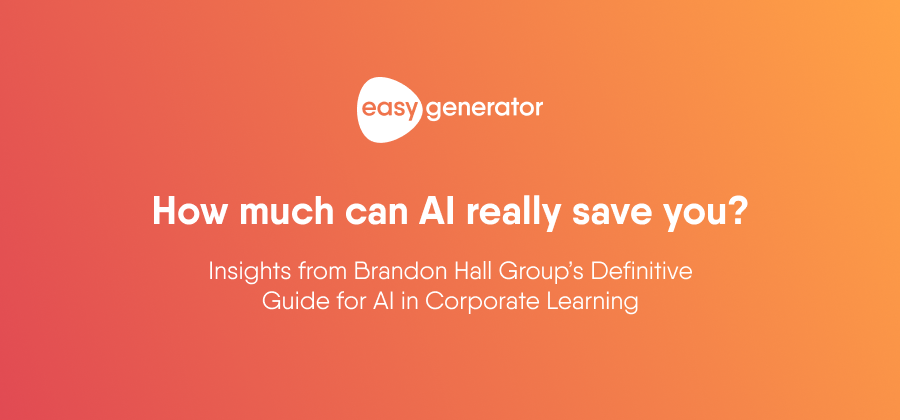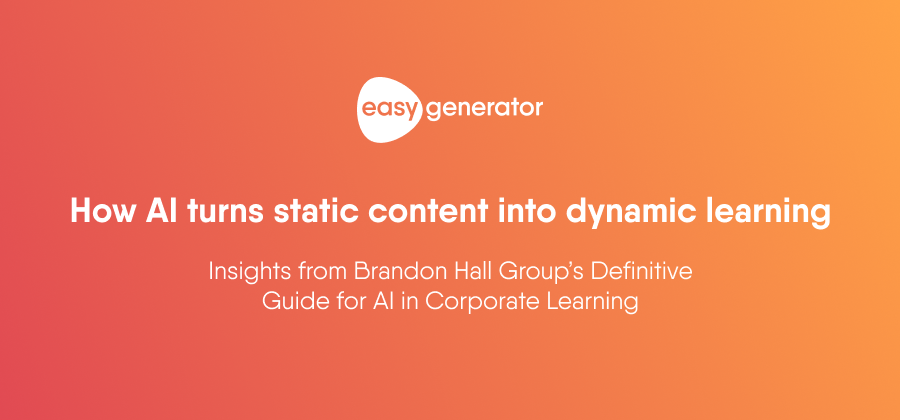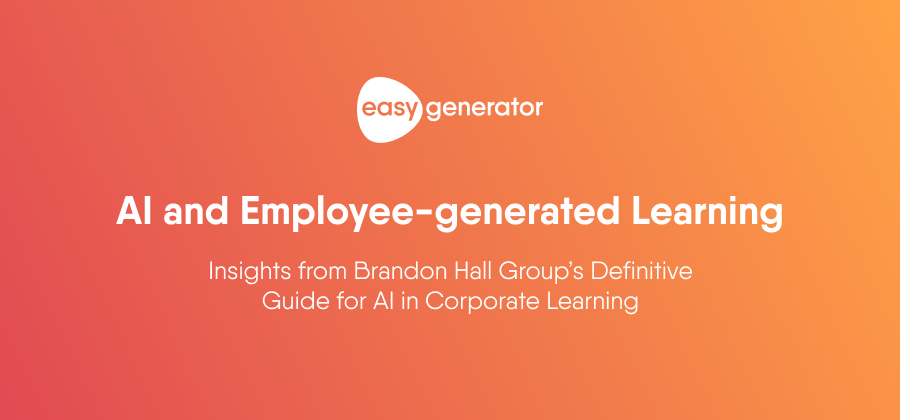Introduction to Employee-generated Learning with Easygenerator
Employee-generated Learning – or EGL – comes highly recommended by learning professionals and is fast becoming mainstream in the corporate world.

Originally posted March 5, 2019
For many organizations, EGL is a big change from the more traditional top-down approach to learning, which often saw L&D teams telling their workers where and how they needed to develop.
EGL does the opposite. It acknowledges that your employees already hold an incredible amount of valuable information about how things are done within your organization. Indeed, nobody understands what happens inside your business better than your own personnel.
So why not put them in charge of creating and maintaining content?
How does Employee-generated Learning work?
With EGL, it’s the employees who own and maintain learning content. Because they hold the expertise, they will also be accountable for when content needs to be updated.
The role of L&D, therefore, shifts from being a course creator to that of a co-creator. Because employees are now responsible for creating e-learning, L&D takes on more of a quality control role, ensuring that each course meets learning best practices.
There are five stages when producing good-quality EGL content. These include:
As part of this six-part blog series for Learning & Development (L&D) managers, we’ll walk you through each of these stages.
We’ll highlight some of the current best practices and show you how tools like Easygenerator can support you during each step. We’ve also developed a handy learning guide if you’d like a more detailed explanation of EGL.
Scale your e-learning activities
Discover the power of Employee-Generated Learning and how it can help speed up the circulation of knowledge in your company.
How does EGL help L&D?
- EGL is faster than conventional content creation. It eliminates the time-consuming sign-off process between L&D and expert employees. EGL allows them to go ahead and produce content on topics they feel their colleagues need to know about.
- EGL is more cost-effective because it doesn’t rely on centralized L&D staff and third-party suppliers.
- EGL is agile because employees can be more responsive to the needs of the business. They’re the ones with the real-life knowledge needed to keep their colleagues informed and competitive.
- EGL is rapidly scalable because it draws from a vast pool of content creators – your workers themselves.
- EGL is higher in quality because it taps into real-life knowledge and expertise. Instead of conveying only broad, theoretical knowledge, EGL educates people on what they really need to know to do well in their jobs. L&D continues to play a role, of course, in providing quality assurance.
If you’d like to find out more about how large corporates have successfully implemented EGL, please take a look at our T-Mobile and Nielsen success stories.


